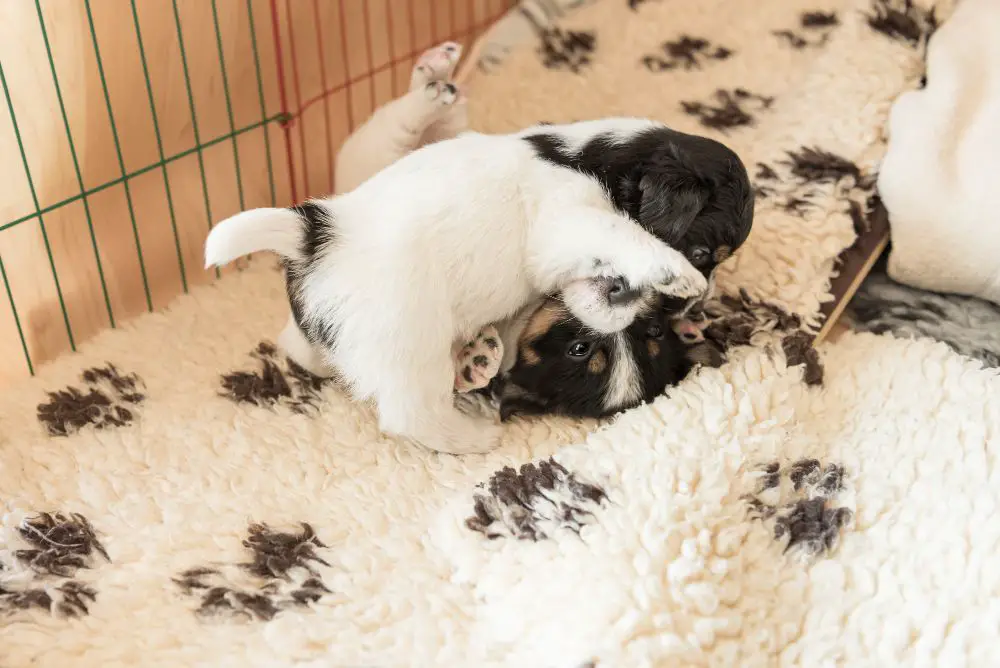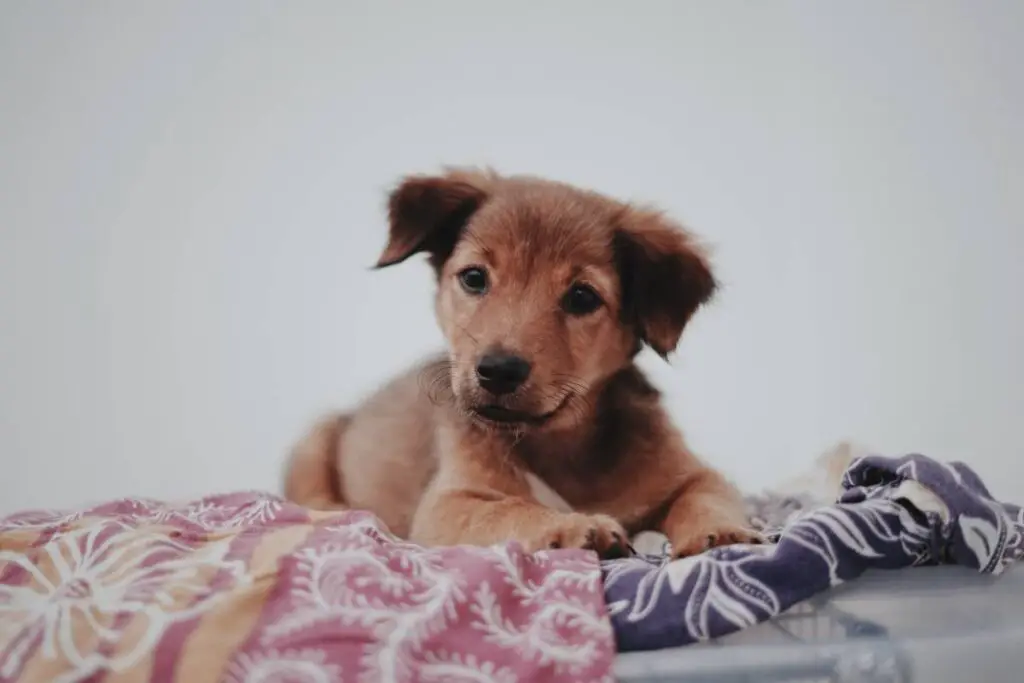Using puppy playpens and when to stop using playpens for my puppy is a frequently asked pair of questions. In this article, we explore common questions about puppy playpens.
Because relaxation is so vital for your puppy’s development, it’s probable they’ll require multiple short naps throughout the day, so you may use the playpen as an alternative to their crate throughout the day.
Your puppy will not require a puppy playpen indefinitely, so don’t be concerned about it becoming a permanent fixture in your home. However, you, as the owner of a young dog, may begin to rely on it.
When is a puppy too old for a playpen?
To understand when you can stop using a playpen for your puppy, you first have to consider what the playpen is for. The playpen is there to stop your puppy from getting into trouble by keeping it in a confined area.
When your dog reaches the age of two, you can typically stop confining him in his playpen completely. The period before that is generally when they are most prone to getting into trouble. It is not until they have reached full maturity that they are able to act appropriately when left alone. This is especially true for bigger dogs, who mature at a slower rate than smaller dogs.
How to transition away from an indoor puppy pen
To ease the transition of a young puppy away from a pen, begin by allowing him brief periods of greater freedom. In order to keep track of him throughout this procedure, you must keep a close eye on him.
Treats must be used to reward and reinforce positive behavior. Begin by rewarding your dog anytime he is quiet and pleasant, rather than if he is acting out of control. If he’s out of the pen and acting crazily, he’ll be put back in the pen immediately. If he behaves well, he will be allowed to remain outside. Reward a calm and collected demeanour.
It is not only behavior. The enclosure serves as a secure haven for the young dog, as well as a location where you may comfortably leave him for brief periods of time when you are unable to properly supervise him.
A puppy should not be left in his playpen for extended periods of time (no more than 2 hours) since he may become bored and begin whimpering, or he may develop certain undesirable behaviors, such as chasing his own tail. It is better to keep the isolation to a minimum.
At what point do you stop using a playpen?
Experts agree that while a bored or unexercised dog may decide to chew on something he shouldn’t at any age, in general, the amount of destructive chewing that a pup will perform decreases with maturity.
The frequency with which dogs chew on unsuitable objects lessens as they grow older and their adult teeth come in, as well as their desire to investigate their environment.
As a result, Gruen believes it is still critical to puppy-proof your home and teach your young pup about safe and improper dog chew toys. “This helps to keep the pups (as well as your belongings) secure. Despite the fact that mature dogs will continue to chew, they will begin to understand what they should and should not chew, “she explains further.
Dogs should be at least 1-2 years old to be considered fully grown, and this is a gradual process. Allowing the dog to run around a limited area for a short length of time is a good starting point. If your dog goes into your belongings, it means he isn’t ready. If he behaves, gradually increase the time he is allowed to be outside and the amount of space he is permitted to explore.
When should I get rid of my puppy playpen?
A playpen, if you have used it correctly, will have become a place of safety for your puppy, somewhere he can nap peacefully and play without getting into trouble.
As dogs mature, they tend to get into less trouble than they did as young puppies, and this control aspect diminishes as the dog ages. They are less likely to find things to chew and destroy. The security aspect does not diminish, and a dog should always have somewhere where it feels safe and will be undisturbed.
You, as an owner, will also appreciate short periods when you can get on with work, without having to be concerned with what your dog is doing. In some circumstances, keeping your pen after the dog has transitioned, can be a good idea. If you work from home, putting your young dog in their playpen is a terrific idea since it provides them with a secure environment in which to relax or play while you get some work done.
You may consider getting rid of the pen and confining the dog to one particular room instead of using a pen. Some dogs will become stressed if they cannot see the owner, so having a playpen situated so that the dog can see your work area may produce better results. This is especially crucial if you work largely from home and want to avoid separation anxiety as much as possible.
So perhaps a better question may be, “Should I get rid of the playpen?”
How do you transition a puppy out of a playpen?
Socialization is something that your dog must learn before it can be permitted to wander free in your home with other dogs, which is why it is so important.
It is necessary for the puppy to learn how to interact with other animals. Dogs that have not been properly socialized may become apprehensive and scared of everything that is new to them. This has the potential to lead to major behavioral disorders, such as hostility and nervousness.
Gradual socialization is achieved by allowing the young dog to roam outside the enclosure and interact with other pets under supervision. This is another reason to retain the pen for a longer period of time than you would otherwise.



